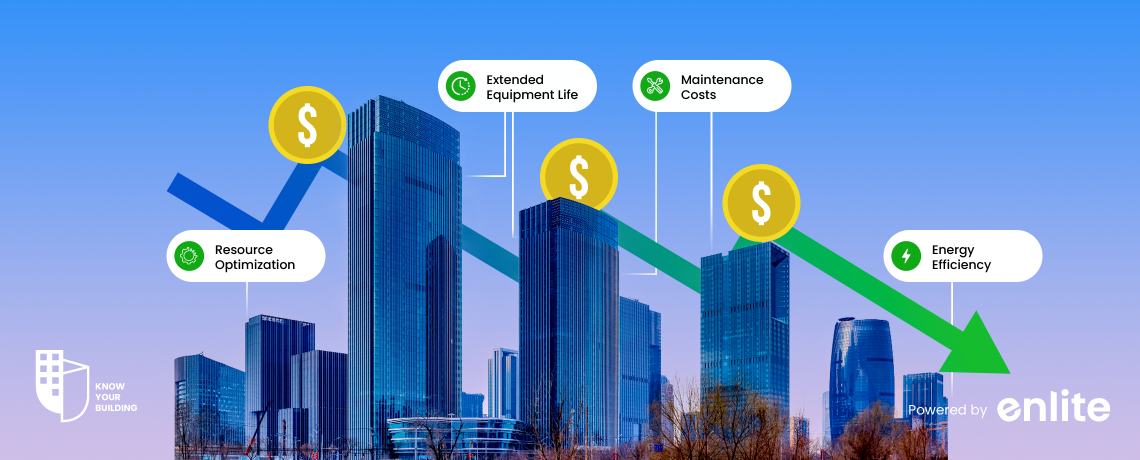In today’s rapidly evolving business landscape, operational efficiency and cost reduction have become critical priorities for organizations across various sectors. One of the key strategies to achieve these goals is the implementation of Building Management Systems (BMS). These sophisticated systems are designed to optimize the performance of a building’s infrastructure, significantly reducing operational costs while enhancing overall efficiency.
What is a Building Management System (BMS)?
A Building Management System (BMS) is an integrated control system that manages the electrical, mechanical, and electromechanical services in a facility. This includes heating, ventilation, air conditioning (HVAC), lighting, power systems, fire systems, and security systems. By providing centralized control and monitoring, BMS allows facility managers to operate buildings more effectively and efficiently.
The Financial Impact of BMS
Implementing a BMS can lead to substantial financial benefits. Here are some of the ways BMS contributes to cost reduction:
- Energy Efficiency: One of the primary functions of a BMS is to monitor and control energy consumption. By optimizing the performance of HVAC systems, lighting, and other energy-consuming equipment, BMS can significantly reduce energy usage, leading to lower utility bills.
- Maintenance Costs: BMS provides real-time monitoring and alerts for equipment performance and maintenance needs. This proactive approach helps in identifying and addressing issues before they escalate, reducing the frequency and cost of emergency repairs.
- Resource Optimization: By automating and optimizing building operations, BMS reduces the need for manual intervention, thus lowering labor costs. It also ensures that resources are used efficiently, minimizing waste.
- Extended Equipment Life: Regular monitoring and timely maintenance facilitated by BMS can extend the lifespan of building equipment, reducing the need for frequent replacements and associated costs.
Know Your Building: The World’s First Cloud-Native Wireless BMS
In the realm of BMS, innovation continues to drive advancements that further enhance operational efficiency and cost savings. One such groundbreaking solution is “Know Your Building,” the world’s first cloud-native wireless Building Management System. This cutting-edge technology is transforming the way buildings are managed and operated.
Features and Benefits of Know Your Building
- Wireless Integration: Unlike traditional BMS that rely on extensive cabling and wired connections, Know Your Building leverages wireless technology. This not only simplifies installation and reduces upfront costs but also offers greater flexibility in system configuration and expansion.
- Cloud-Native Platform: Being cloud-native, Know Your Building allows for seamless data integration and real-time monitoring from anywhere in the world. This ensures that facility managers have constant access to critical data and can make informed decisions promptly.
- Energy Optimization: Know Your Building excels in energy management. It continuously monitors energy consumption patterns and provides actionable insights to optimize energy use. This leads to significant reductions in energy costs and helps in achieving sustainability goals.
- Carbon Footprint Monitoring: With a growing emphasis on environmental responsibility, Know Your Building includes advanced features for monitoring and managing a building’s carbon footprint. It tracks carbon emissions and provides strategies to reduce them, contributing to a greener and more sustainable operation.
- Predictive Maintenance: The system’s predictive analytics capabilities enable it to foresee potential equipment failures and maintenance needs. This proactive approach not only minimizes downtime but also reduces the long-term maintenance costs by addressing issues before they become critical.
- Scalability and Flexibility: Know Your Building is designed to scale with the needs of any organization. Whether managing a single facility or multiple sites, the system can be easily adapted and expanded to meet evolving requirements.
Real-World Impact
Numerous organizations have already begun to reap the benefits of implementing Know Your Building. For example, a large commercial real estate firm reported a 20% reduction in energy costs within the first year of installation. Another case study from a healthcare facility highlighted a 15% decrease in maintenance expenses due to the system’s predictive maintenance features.
Building Management Systems play a crucial role in reducing operational costs and enhancing the overall efficiency of facilities. The advent of innovative solutions like Know Your Building, the world’s first cloud-native wireless BMS, marks a significant leap forward in the capabilities of these systems. By optimizing energy use, reducing maintenance costs, and providing comprehensive monitoring and control, BMS like Know Your Building are not only cost-effective but also essential for achieving sustainability and operational excellence in today’s competitive environment.
As organizations continue to seek ways to improve their bottom line and reduce their environmental impact, the adoption of advanced BMS technology will undoubtedly become an integral part of their strategy. Embracing such innovations ensures a smarter, more efficient, and sustainable future for buildings worldwide.














